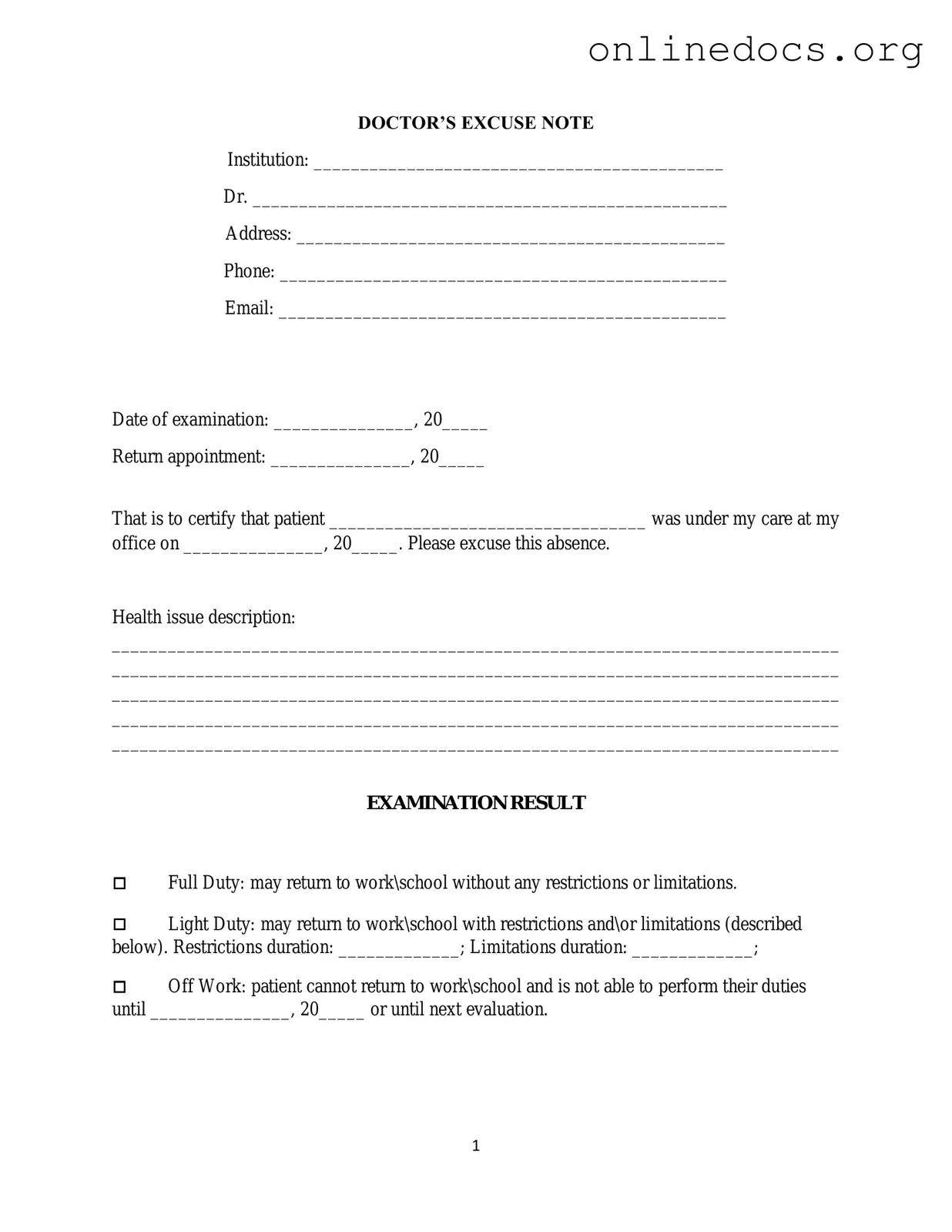The first document similar to a Doctor's Excuse Note is a Medical Leave of Absence Form. This form is used by employees to formally request time off from work due to medical reasons. Just like a Doctor's Excuse Note, it typically requires a healthcare provider's signature to verify the necessity of the leave. Both documents serve to communicate the legitimacy of the absence to an employer, ensuring that the employee's rights are protected during their recovery period.
To enhance your documentation process, consider utilizing a comprehensive Recommendation Letter template that facilitates the collection of insights from individuals who can effectively endorse a candidate’s capabilities and achievements.
Another comparable document is a Return to Work Note. After a medical absence, employees may need to provide this note to confirm they are fit to resume their duties. Similar to a Doctor's Excuse Note, it is issued by a healthcare professional and outlines any restrictions or accommodations the employee might need. Both documents emphasize the importance of health and safety in the workplace, ensuring that employees do not return before they are ready.
The Family Medical Leave Act (FMLA) Certification Form is also closely related. This form is used to request leave under the FMLA for serious health conditions affecting the employee or their family members. Like the Doctor's Excuse Note, it requires medical verification to support the request. Both documents aim to provide legal protection for employees needing time off for health-related issues, ensuring they can focus on recovery without the worry of job security.
A Short-Term Disability Claim Form is another document that shares similarities with a Doctor's Excuse Note. This form is used to apply for benefits when an employee is unable to work due to a medical condition. It often requires medical documentation, including a Doctor's Excuse Note, to substantiate the claim. Both documents work together to ensure that employees receive the necessary support during their time away from work due to health issues.
The Sick Leave Request Form is also akin to a Doctor's Excuse Note. Employees use this form to formally notify their employer of their need to take sick leave. It may require a Doctor's Excuse Note as supporting documentation, especially for extended absences. Both documents serve to maintain clear communication between employees and employers regarding health-related absences, ensuring that the process is transparent and respectful of the employee's needs.
A Fitness for Duty Certificate is another document that aligns with the purpose of a Doctor's Excuse Note. This certificate is issued by a healthcare provider to confirm that an employee is capable of performing their job duties after an illness or injury. Similar to a Doctor's Excuse Note, it reassures employers about the employee's health status and ability to return to work safely. Both documents play a crucial role in facilitating a smooth transition back to the workplace.
Lastly, a Workers' Compensation Claim Form is related to a Doctor's Excuse Note, particularly when the absence is due to a work-related injury. This form requires medical documentation to support the claim for benefits. Like the Doctor's Excuse Note, it emphasizes the importance of proper medical evaluation and documentation to ensure that employees receive the necessary care and compensation while they recover.
